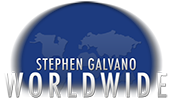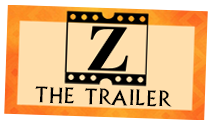
Over the past several decades, Stephen Galvano has led various ministry teams to Zambia. Their goal is never to build a church or build up themselves, but rather to build-up, encourage, and edify pastors and leaders. God has moved overwhelmingly in Zambia. During one particular trip, over 250 churches participated in a event that touched the entire nation. All said, over 20,000 attended the evening rallies where hundreds were healed, and nearly 10,000 were saved. The daily pastor’s seminar touched more pastors than any other event in recent history. They were renewed to continue God’s work. We believe the residual effects of this event will continue for years to come.
Now Playing: “Zambia, the Crusade that Touched a Nation”. Captured completely on location in Zambia, Africa, this film chronicles the entire journey of Stephen Galvano and team as they undergo this life-altering experience. Journey with them across the plains of Africa, and see a nation being transformed. Running time: 51mins.
SEE THE FILM NOW

Crusade Report

REPORT OF JUBILEE CRUSADE
Calvary greetings to you. We are well and blessed especially after the crusade and School of Ministry.
I wish to say that we are very excited to have you for the crusade and your anointed ministry proclaiming and teaching. The following were observed:
ATTENDANCE
We saw about five thousand in attendance on the first day, to about twenty five thousand people on the last day of the crusade. At the School of Ministry, there were about 100 to 300 pastors and leaders attending daily. There were people from very distant towns of Zambia also.


ALTAR CALL
There were about five thousand who surrendered their lives to the Lord. An average of four thousand responded to the prayer of healing and deliverance and many were healed and delivered from demons and witchcraft. An invitation to pray for incurable diseases such as T.B., cancer, and HIV Aids were made. More than two hundred people came forward for prayer and the presence of God was so strong that many people were touched and fell down by the power of God.
TESTIMONY
There were many people who were under the spell od satanism who had been delivered. One lady has even joined our church. One brother was deaf and as Pastor Lee was praying the ear drum opened and is now able to hear. The brother in the praise team came for prayer for his wife who was dying of malaria. Pastor Galvano and team praying and she was healed while at the hospital. Even today she is very fine. The township where the crusade was being held has experienced a calmness and peace as opposed to the violence that has plagued that place. In one night we had over two hundred people who responded to the baptism of the Holy Ghost and about thirty two people testified to have experienced the baptism. One brother came forward for prayer in regard to finances. The following day God blessed him with K10,000,00.00 (US$3,500.00).




The Mayor of Ndola City was overwhelmed at Pastor Galvano and his team of their ministry. He sent the secretary with the mayor’s official car to pick Pastor Galvano up for further ministry but found him already gone to the hotel. Pastor Galvano and team were declared citizens of Ndola by the Mayor. At the School of Ministry on the 18th of April, there were two people who were prayed for by the team and one of them had demonic oppression and the Lord healed and restored his mind. There was a man who was brought from the hospital with T.B. which is a very deadly disease and it is associated with HIV Aids. After prayer, they went to the hospital for a medical examination. The mother has said that there is a medical certificate to certify that the gentleman no longer has T.B. Glory to our God! There are many testimonies that are flooding in and I will send them all to you.
CONCLUSION
This School of Ministry and Jubilee Crusade has a great impact on a lot of people spiritually, physically, etc. This has to become a annual event. A greater Ndola Christian Fellowship has been formed to facilitate meetings to provide Fatherhood. Further details will be given to you later. Sincerely for the Kingdom,
Pastor Abel Chomba
Crusade and Ministry Chairman

Testimonials


“The coming of Reverend Stephen Galvano earlier was a big blessing to the church in Ndola and Zambia as a nation. The crusade and the school of ministry impacted me and a small group of pastors who began to pray and seek God’s direction for our country.
The fire that was lit in the nation through Reverend Galvano’s ministry in the city began to spread like wild fire in the country.The ministry of Reverend Galvano was a call to prayer and revival.
I will never forget how the glory of the Lord struck me to the ground when I was interpreting for Reverend Galvano on the fourth day of the crusade. I could not stand and found myself on the ground for a long time. The glory and the presence of God was so evident that night. Right there I knew that God was calling me to a higher dimension of ministry. Another interpreter was sought to help because I could not stand.
After the crusade and the school of ministry, I felt a strong urge to pray. From that time I introduced a prayer tower at my home. We started praying every morning from 6:00 to 8:00. Eventually a prayer chain introduced and people come to pray and fast exchanging days from Monday to Saturday. Because of this, God opened a wonderful door for me according to the prophecy Reverend Galvano gave me at the first day of the crusade. I began to minister senior government officials and later the president. Many times I find myself in prayer and discussion with the president.I have seen the hand of God in my ministry and congregation. God has been prospering us spiritually and numerically. I thank the Lord for you and the vision He has placed upon your heart.”
Pastor Barney Mulenga




“Dear Pastor Galvano,
Greeting in the name of Jesus our risen savior. I trust you have continued serving the Lord diligently.
Your name has become a household name with us. Thank you so much for blessing Pastor Ngosa and family. Catherine is always talking about you and your ministry. You have really impacted her life with the call to obedience when God speaks.We must be a people of endurance up to the end. this is a sign of an apostolic people. God is using a fresh APOSTOLIC SPIRIT of endurance as he restores the church before his coming.
Please Pastor Galvano, continue with that which God has impressed upon your mind in the area of ministry. Catherine and myself have also been working together in an interdenominational ministry. We are working in the area of pre marriage counseling as a perquisite for strong marriages, homes and thus a strong church. God is indeed doing a new new thing over the nations by His Spirit in many different areas.
You have really been a blessing me through Catherine, thank God for your ministry. Continue to be diligent for the Lord. Please also extend my sincere gratitude to your son whom we have heard is also very diligent for the Lord.
Please accept these two African shirts for you and your son. These are tokens of our gratitude and love for you and the ministry. Our thoughts are with you as you labour for the Kingdom. I look forward to meet you next year at the World Ministry Conference, and to sit under your feet for ministry, as long as almighty God continues to give me his breath in my nostrils.
God Bless You, guard and protect you in all your endeavors in the ministry and your life.
Love in Christ,
Meka Kamanga”
About Zambia

Zambia
{zam’-bee-uh}
The Republic of Zambia is a landlocked country of south central Africa, bordered on the south by Zimbabwe and the Caprivi Strip of Namibia, on the southeast by Mozambique, on the east by Malawi, on the northeast by Tanzania, on the north and west by Zaire, and on the west by Angola. Once the British colony of Northern Rhodesia, Zambia gained its independence in 1974. For 27 years Zambia was a one-party state led by Kenneth D. Kaunda. In 1991, after multipartyism was legalized, there was a peaceful shift of power to a new party and a new leader. This peaceful transition, hailed as a significant development for democracy in African politics, was somewhat tarnished by subsequent developments.
LAND AND RESOURCES
The land surface of Zambia consists of a series of gently undulating plateaus broken by isolated low mountain ranges. The highest elevations are found in the Malinga Hills near the Malawi border, which reach 2,164 m (7,100 ft); the lowest are in the southeast. The average elevation is about 900-1,500 m (3,000-5,000 ft). The main plateau areas have sandy clay soils of marginal agricultural value. These soils become more fertile in the lower plateau region. The river valleys are covered with fertile alluvial soils. Vegetation ranges from forest to open grassland. The plateau areas are characterized by wooded savanna and tall grasses, whereas in the river valleys the mopani tree is predominant.
Zambia is dominated by a tropical savanna climate. Most of the country has a single rainy season with a January maximum. The rains last from about 190 days in the north to fewer than 120 days in the south. Precipitation in the northern half of the country averages 1,219 mm (48 in) and in the southern half 838 mm (33 in) per year. Temperatures range from 16 degrees to 27 degrees C (60 degrees to 80 degrees F) in the cool season (May to August) and from 28 degrees to 32 degrees C (82 degrees to 90 degrees F) in the hot season (August to November).
Zambia’s rivers are concentrated in two systems. In the north the major rivers are the Chambeshi and the Luapula, which rises in Lake Bangweulu. They drain eventually into the Congo River. In the south the Zambezi River and its tributaries form the major river system. Lake Tanganyika straddles Zambia’s northern boundary.
Zambia has a wealth of mineral resources, especially copper, lead, zinc, and coal. The Copperbelt, where most mining takes place, lies north of the capital city of Lusaka along the Zairian border. The major rivers have valuable potential for hydroelectric power.
PEOPLE
Zambia’s population is ethnically diverse. Most of the people are of Bantu origin (including Bemba, Tonga, Malawi, Lozi, and Lunda), although San and Twa live in some areas. The national language is English, which also serves as the lingua franca, but several other major language groups are used. About 72% of Zambia’s population are Christian or combine Christianity with traditional African beliefs. Most of the remainder practice traditional African religions, with small Hindu and Muslim minorities.
Zambia has one of the highest rates of population growth in the world. Birthrates are high (51 per 1,000 in 1985-90), 50% of women are married by the age of 20, and approximately 50% of the population is below the age of 50. Fertility rates vary between provinces and between urban and rural areas. Death rates have fallen rapidly from 30 per 1,000 in 1950 to 13 per 1,000 in 1990. The percentage of the population living in urban areas is increasing, reflecting the high rate of rural-to-urban migration. Lusaka is the largest city. Other major urban centers are the Copperbelt cities of Kitwe and Ndola.
Rapid population growth has severely strained educational and health-care facilities. Despite expansion at the primary and secondary levels, educational improvement is limited by inadequate facilities, insufficient teachers, and a scarcity of financial resources. Recent educational reforms target the expansion of technical schools and “science” in the curriculum. The country has two institutions of higher learning–the University of Zambia at Lusaka, founded in 1965, and the Copperbelt University at Kitwe, which is to be transferred to Ndola. Health-care facilities, especially in rural areas, remain inadequate, and access to physicians is limited. In 1990 free medical care in hospitals was abolished. Major medical problems include chronic illnesses such as malaria, schistosomiasis, and dietary insufficiency as well as acute diseases such as measles, typhoid, dysentery, and cholera. A decaying infrastructure fosters the spread of disease; in 1992, for example, a cholera epidemic in Kitwe was blamed on broken equipment in sewage treatment and water plants and a lack of chlorine.
ECONOMIC ACTIVITY
Economic development since the early 20th century has been based on copper mining. Zambia produces about 7% of the world’s copper, ranking fifth in the world, as well as sizable amounts of lead, zinc, cobalt, phosphates, and other minerals. Small amounts of coal are also mined. The dependence on copper, which contributed 86% of export earnings in 1990, has left Zambia dangerously vulnerable. Falling copper prices since 1975 have reduced export income and lessened Zambia’s ability to service its large foreign debt. In addition, Zambia’s commercially recoverable copper reserves are expected to be nearly exhausted by the year 2000.
To diversify the economy and reduce food imports, the government has outlined four priority areas of investment eligible for incentives: agriculture, tourism, import substitution, and nontraditional exports. Perhaps the greatest potential for resource development is in agriculture and tourism. Only 7% of the land is under cultivation. A 1992 land use survey identified fallow land that would be confiscated and sold if not cleared within 18 months. In addition, virgin bush along the Tazara railway is targeted for sale to private investors.
Maize, cassava, sorghum, finger and bullrush millet, peanuts, and beans are the principal staple crops. Commercial crops are maize, groundnuts, tobacco, vegetables, fruit, cotton, and sugarcane. Sugarcane plantations on irrigated land at Mazabuka in the south make Zambia self-sufficient in sugar. Wheat flour is imported mainly for consumption in urban areas. Cattle are raised near the population centers and along the line of the railway, especially in the south. Because of the tsetse fly, cattle raising is restricted in northeastern Zambia.
Tourism receipts for international visitors in 1989 were $5 billion. Tourism is in an early stage of development, however, and considerable potential for foreign exchange earnings exists at the country’s game parks (especially South Luangwa Valley) and at Victoria Falls, the world’s widest waterfalls.
Although Zambia is landlocked, fishing is an important activity in the large lakes and rivers and provides a useful source of protein. The remoteness of the fisheries and inadequate transportation and storage facilities hamper the development of a commercial fishing industry. Forestry has some potential for development with careful management, as 27% of the land area is forested.
Manufacturing has been promoted through the Industrial Development Corporation on a 51% government-49% private-sector ownership plan that encompasses the copper mines and smelters, iron and steel mills, fertilizer plants, a cobalt refinery, and brick factories. Manufactured goods include processed foodstuffs and various consumer goods. Privatization of Zambia’s state-owned economic structure is an integral part of the country’s new policy. The government plans to unbundle state-owned properties, price them realistically, and offer enhanced investment incentives, including guarantees allowing profits to be taken out of the country and protection against expropriation.
Hydroelectricity is produced at the huge Kariba Dam on the Zambezi; on the Kafue River; and at Victoria Falls. Coal-produced electricity is important in the Copperbelt.
Railroads are the chief means of transporting landlocked Zambia’s products to the sea. To lessen dependence on South African ports, a rail link from the Copperbelt through Tanzania to the sea was completed in 1976 with Chinese aid.
GOVERNMENT
The constitution of 1973 declared Zambia a republic, with a president and a unicameral legislature elected to 5-year terms. The 1973 constitution was amended in December 1990 to permit multiple political parties. A multiparty constitution adopted in 1991 restricts the president to two 5-year terms and abolishes the office of prime minister; the president appoints the cabinet from among the 150 members of the National Assembly. Both the president and members of the legislature are elected by direct popular vote to 5-year terms.
HISTORY
In 1851, David Livingstone crossed the Zambezi River from the south and spent the next 20 years exploring what is now Zambia. In the late 19th century the British South Africa Company began making treaties with the local chiefs in what was then known as Northern Rhodesia. Following the 1924 British administrative takeover of the region and the discovery of copper during the late 1920s, many Europeans immigrated to the area.
In 1953, Northern Rhodesia, Southern Rhodesia (now Zimbabwe), and Nyasaland (now Malawi) were brought together by the British into the Federation of Rhodesia and Nyasaland. This federation lasted until 1962, when Nyasaland pulled out, followed by Northern Rhodesia in 1963. Independence for Zambia followed on Oct. 24, 1964. Relations with Southern Rhodesia became strained after the 1965 unilateral declaration of independence by the white minority government there, and Zambia’s flow of goods through Rhodesia was interrupted. Falling copper prices, a huge foreign debt, and neglect of the agricultural sector meant that Zambia’s economic problems did not end when Rhodesia gained independence as Zimbabwe in 1980. Kenneth D. Kaunda, who had served as Zambia’s president since independence, was a leading African diplomat praised abroad for his antiapartheid stance. He allowed black nationalists seeking to end white rule in Namibia and South Africa to set up bases in Zambia despite cross-border attacks by South African security forces. Kaunda’s popularity at home, however, declined with the standard of living; between 1980 and 1990, the country’s average per-capita income declined by 4.9% a year. Economic austerity measures imposed at the insistence of the International Monetary Fund (IMF) raised prices for many necessities and led to riots in 1986 and 1990. As demands for political and economic reform mounted, Kaunda legalized multiple political parties in December 1990.
Multiparty elections–Zambia’s first in nearly 20 years–were held in 1991. Kaunda and the ruling United National Independence party (UNIP) were resoundingly defeated by Frederick Chiluba and his Movement for Multiparty Democracy (MMD) in elections that foreign observers reported were fairly conducted. The MMD captured 124 out of 150 legislative seats, and Chiluba became president on Nov. 2, 1991. Chiluba, who lifted a 27-year state of emergency imposed in 1964 to counter threats to national security from white-ruled Rhodesia, inherited a $7.5 billion international debt and poor relations with international donors. He restored relations with the World Bank and the IMF and cut all subsidies, even on staple foods like maize meal. Rising food prices, inflation (120% in 1993), job losses in the civil service (and potential job losses as state companies are sold), labor strikes, drought, and political violence all threatened the new democracy as did Chiluba’s reinstatement of the state of emergency in March 1993 in response to an alleged coup plot by a UNIP faction. Kaunda emerged from retirement and was reelected UNIP leader in June 1995. After the constitution was amended to bar Kaunda from running for president, UNIP boycotted the November 1996 elections, which were won by Chiluba. Zambia may be a model for democratic and peaceful political transition, free enterprise, and privatization, but the country still has many social and economic problems that need to be solved.
John W. Snaden
Reviewed by Barbara Anne Carmichael
Bibliography: Achola, P. P., Implementing Educational Policies in Zambia (1992); Burdette, M., Zambia: Between Two Worlds (1988); Channock, M., Law, Custom, and Social Order: The Colonial Experience in Malawi and Zambia (1985); Gann, L. H., The Birth of a Plural Society (1968; repr. 1982); Hamalengwa, M., Class Struggles in Zambia, 1889-1989, and the Fall of Kenneth Kaunda, 1990-1991 (1992); Kaplan, I., ed., Zambia (1989); Macpherson, F., Anatomy of a Conquest (1982); Ollawa, P. E., Participatory Democracy in Zambia (1985; repr. 1990); Pottier, J., Migrants No More (1988); Roberts, A., A History of Zambia (1976); Tordoff, W., Administration in Zambia (1981); Vaughan, M., and Moore, A., Cutting Down the Trees: Agricultural Change, Anthropology and History in Zambia, 1890-1990 (1993; repr. 1994); Vaughan, R., Zambia (1992); Turok, B., Mixed Economy in Focus (1989); Woldring, K., ed., Beyond Political Independence (1985).




